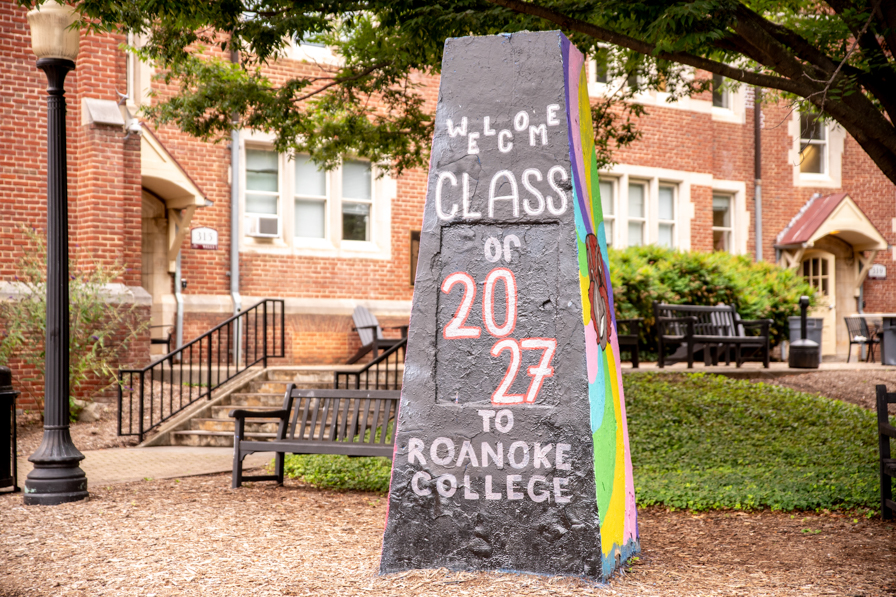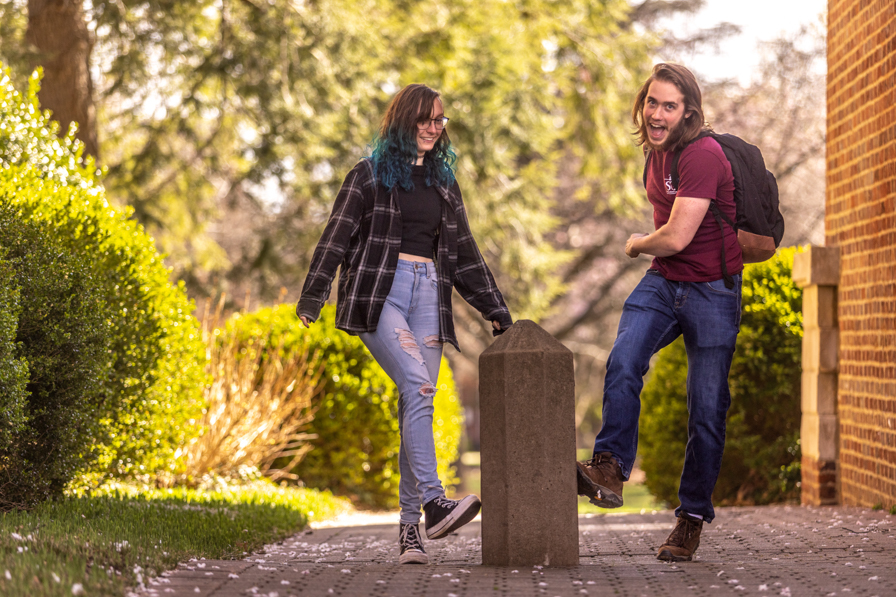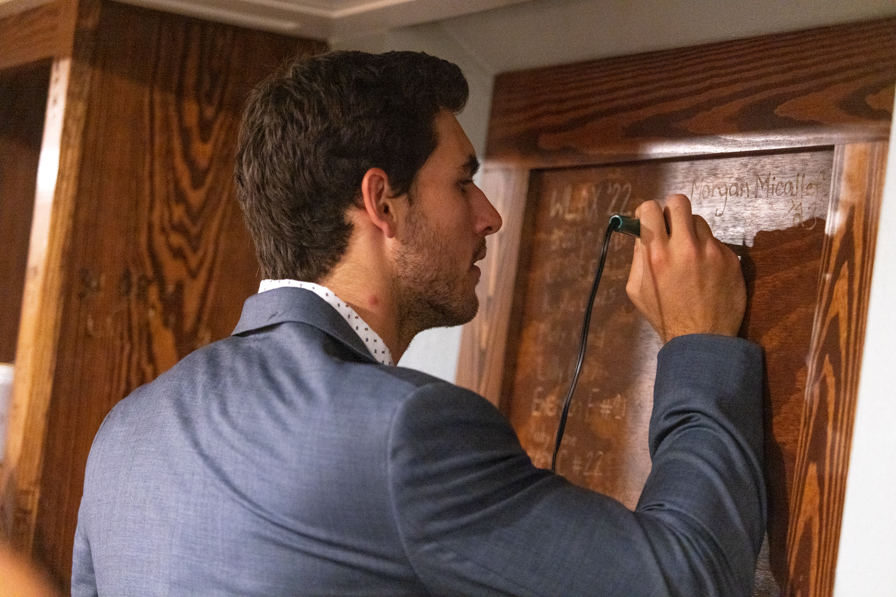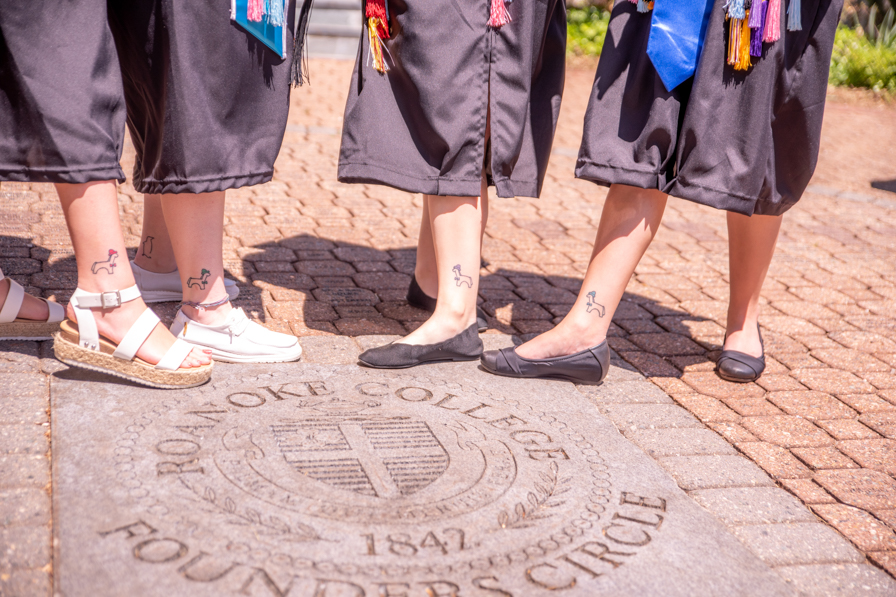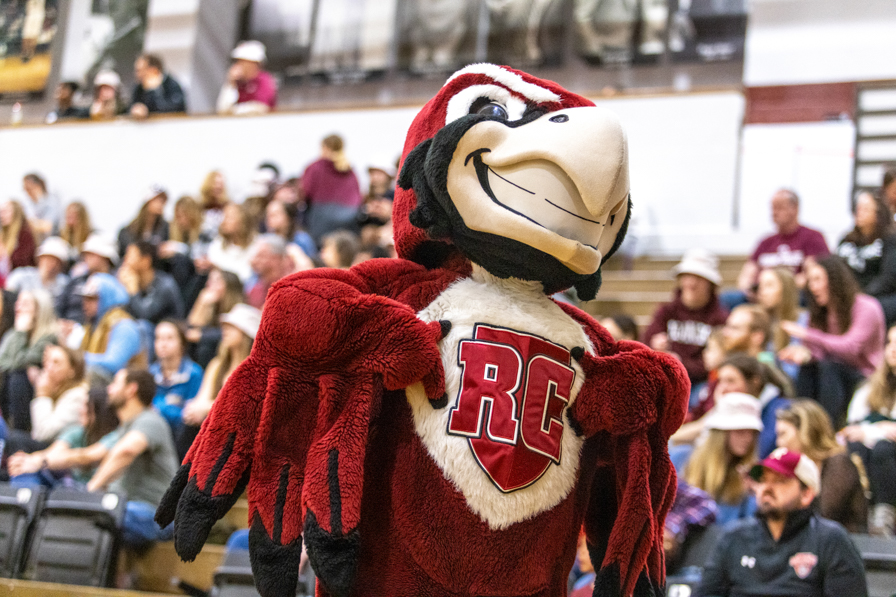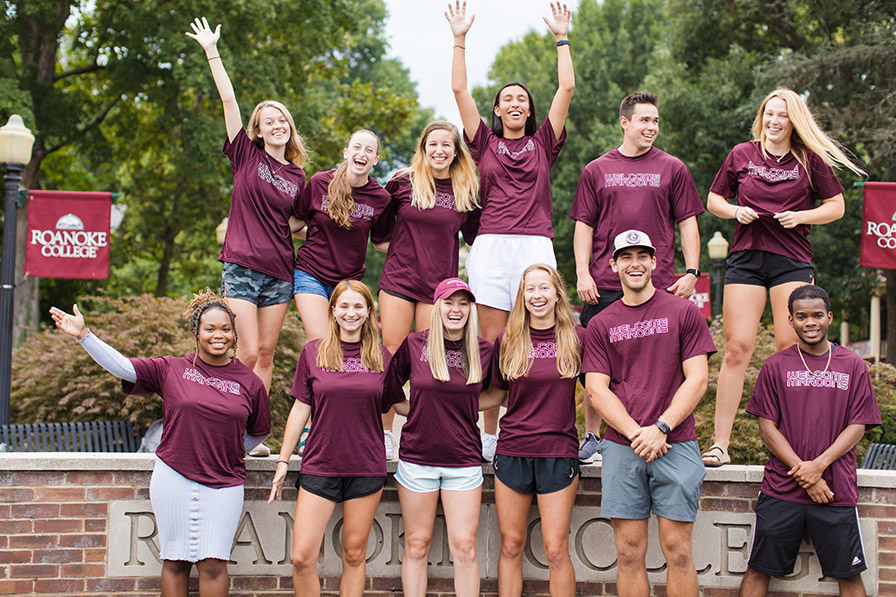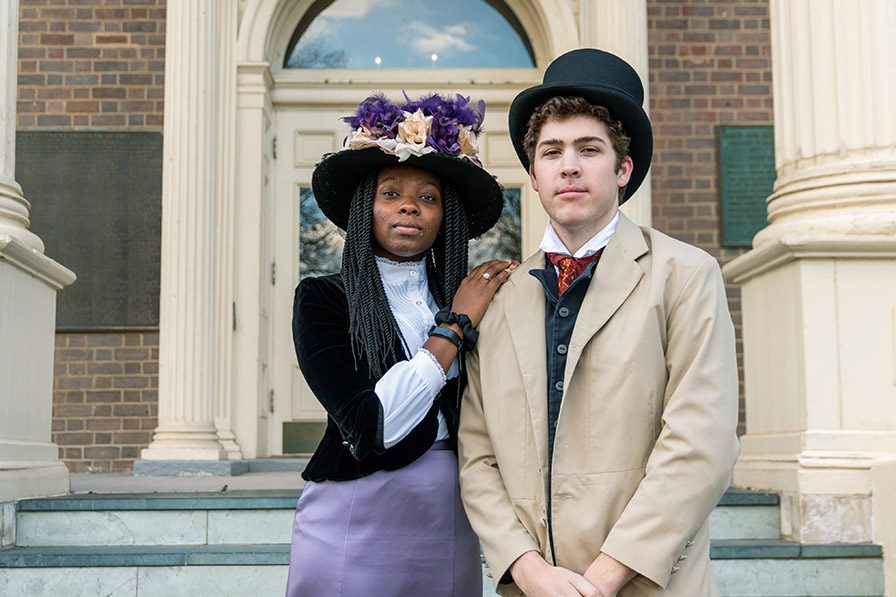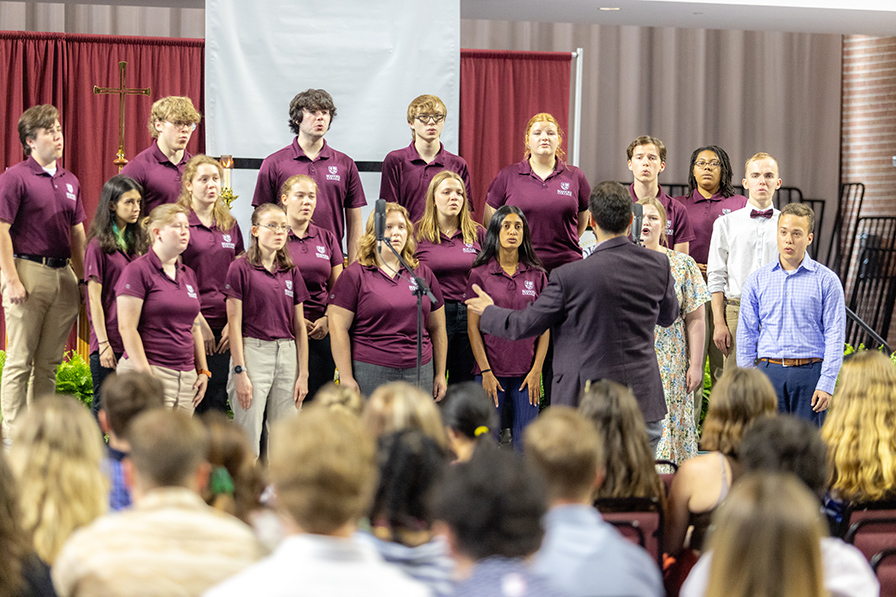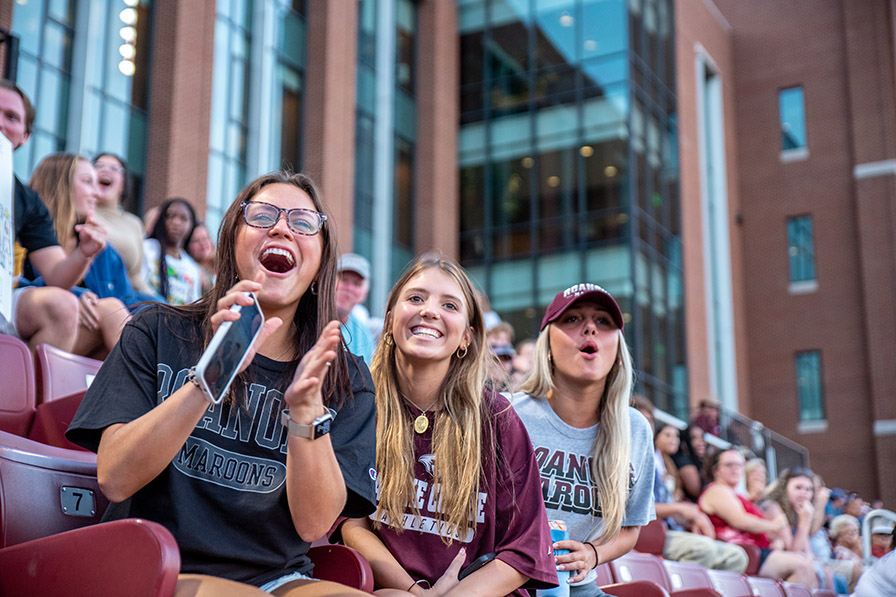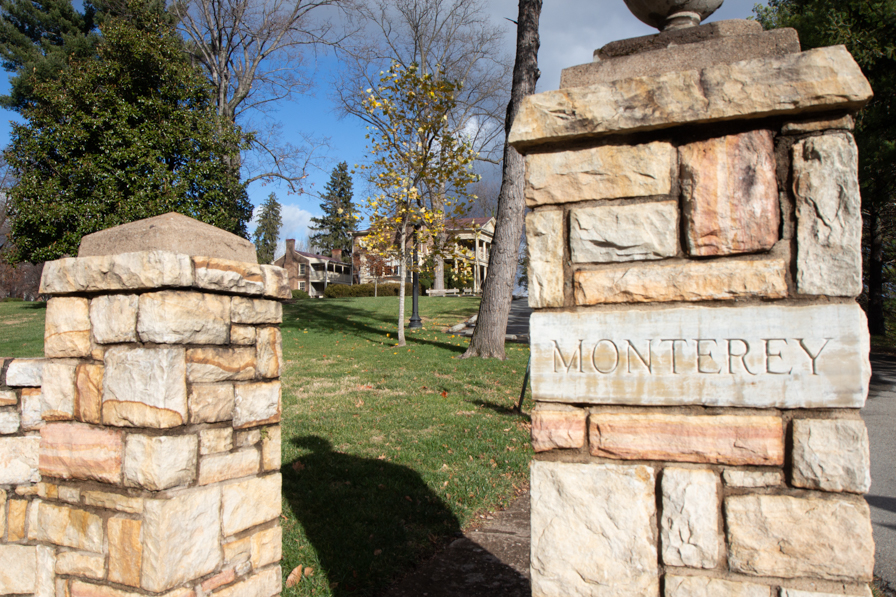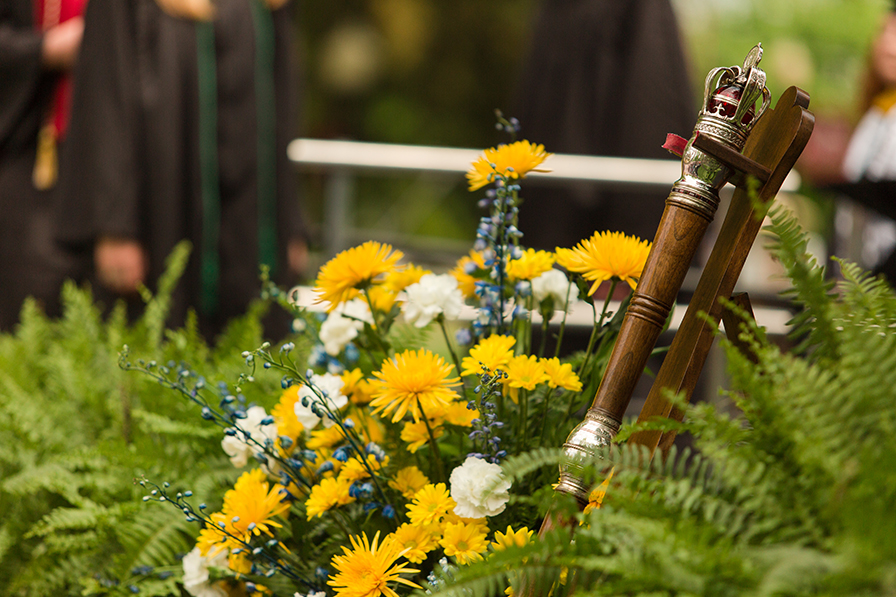History & Traditions
Over the nearly 200-year history of Roanoke College, traditions have developed and have been passed down from student to student.
-
Built under the cover of night in the 1970s by a determined student and a few hundred friends, the structure was known by the builders as The Monument but now has become known as The Rock. The 10-foot stone canvas is painted time and time again to announce upcoming events, performances and sporting events.
-
This three-foot cement obelisk was added to campus more than 100 years ago after a student nearly ran a professor down zipping between buildings in a car (picture a Model T Ford!) It was meant to obstruct traffic, but students soon began to kick the post for good luck. Now it’s one of the oldest traditions on campus. Kick it when you walk by. Students do, even alumni still kick it when they are on campus. We all need good luck!
-
Signing In
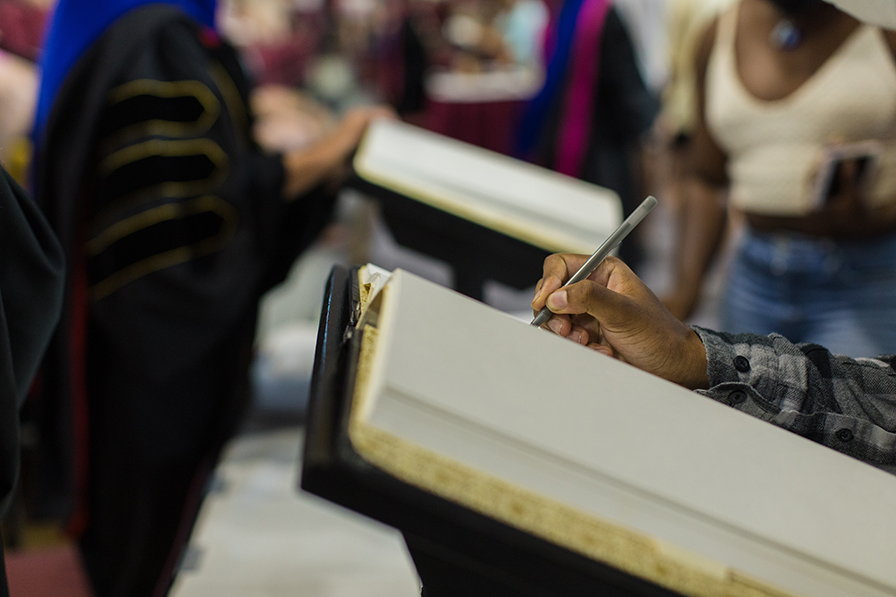
New students sign in to class register books during orientation each year, under the watchful eye of faculty members. It is one of the ceremonial ways in which we usher in a new academic year.
-
Seniors “sign out” by burning their name into the wooden bookcases at the President’s House. This tradition started in the 1970s and has continued through several presidents. More bookcases are added frequently so there’s plenty of room for new grads!
-
The “ban” on stepping on the College Seal in front of the Administration Building is relatively new (the College Seal was added to the Heritage Walk in 1995), but it’s serious business. Students say you won’t graduate on time if you step on the seal, so it’s generally avoided at all costs — until graduation day, and then there’s dancing in the streets AND especially on the seal!
-
-
Learn more about Roanoke slang.
-
Every year the History Department celebrates Founder's Day with a bonfire on the back quad, a torch light parade and a party in the Cavern.
-
🎵 Deep in our hearts, a flame is softly burning... 🎵
-
📣 Clap your hands (clap, clap)
📣 Stomp your feet (stomp, stomp) -
Maroons
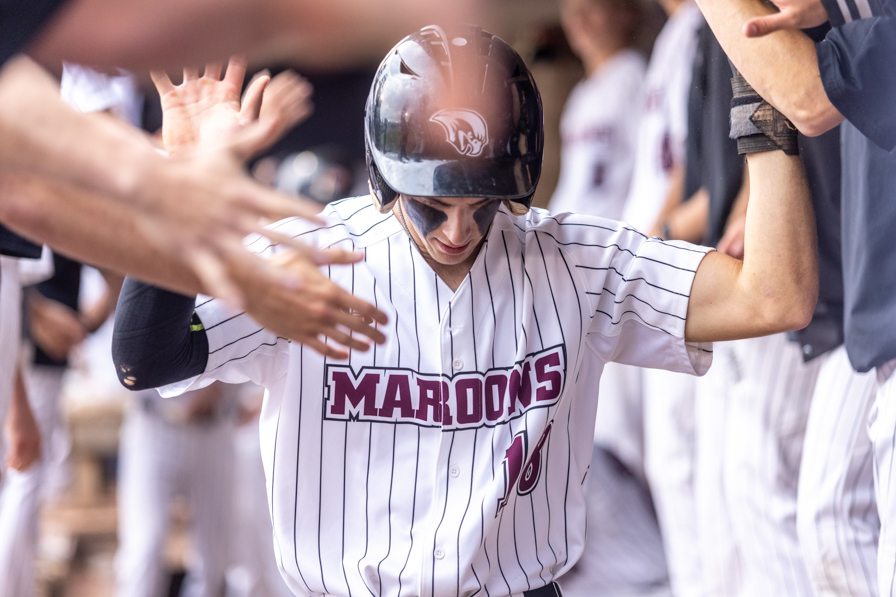
So if the mascot is a hawk, what’s a Maroon? It’s a color! Roanoke’s official colors are blue and gold, but as Maroon athletics kicked off more than 100 years ago, blue and gold uniforms were hard to find. As a result, the teams had to compete in the uniforms that were available – which were maroon. The local paper started referring to Roanoke College students as Maroons, and it stuck! Now, you see blue and gold mingled with maroon throughout the College.
-
-
The Roanoke mace was presented to the College in 1996 by the four daughters of Hartselle DeBurney Kinsey '21. The mace is dedicated to Mr. Kinsey, who was devoted to Roanoke College as a student, teacher, advocate and trustee. Maces date back to the Middle Ages, when they were used as weapons. Today, they are primarily symbols of academic authority used at formal convocations and commencement ceremonies.
Senior Sport Management and Business major Evan, a student-athlete member of Roanoke's Men's Soccer team, talks about the college's long-standing traditions.
Historical Tour
 Roanoke College's storied past is tied to its present and future. With this immersive virtual tour, it's easier than ever to learn about the history and culture of the College. You'll take a journey through today’s campus while earning about the 180+ years of history of the College. The tour covers major events, the evolution of buildings on campus, the public art, how student life has evolved over the years, and the groundbreaking research that's leading to important discussions about our past.
Roanoke College's storied past is tied to its present and future. With this immersive virtual tour, it's easier than ever to learn about the history and culture of the College. You'll take a journey through today’s campus while earning about the 180+ years of history of the College. The tour covers major events, the evolution of buildings on campus, the public art, how student life has evolved over the years, and the groundbreaking research that's leading to important discussions about our past.
